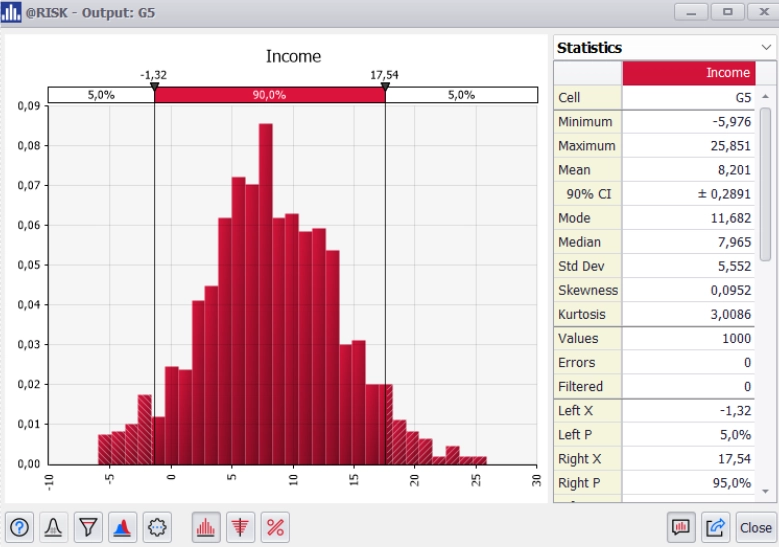
Introduction
Think of managing a project as sailing across an unpredictable ocean. The captain charts a route, but the winds, waves, and hidden currents can push the ship off course. Success depends on anticipating these uncertainties and adjusting the sails at the right time. In the world of project management, this navigation tool is quantitative risk analysis, and one of its most powerful instruments is the Monte Carlo simulation. Far from being an abstract mathematical model, it is the compass that helps project managers prepare for uncertainty. Within PMP training in Bangalore, this concept is not just taught in theory but brought to life through real-world applications that resonate with professionals navigating high-stakes projects.
The Story of Probability and Projects
Imagine you are tasked with constructing a new metro line in Bangalore, a project involving hundreds of suppliers, contractors, and regulatory checkpoints. Each task carries risks: supply delays, fluctuating costs, weather disruptions. While traditional planning provides a fixed completion date and budget, reality rarely unfolds so neatly. This is where probability steps in, showing not just one possible outcome but a spectrum of them. Monte Carlo simulation generates thousands of scenarios, each reflecting variations in risk. For learners exploring PMP training in Bangalore, these simulations serve as rehearsals for the unexpected, teaching them to see risk not as a roadblock but as a variable to be modelled and managed.
How Monte Carlo Simulation Works
Monte Carlo simulation may sound complex, but its logic mirrors something we all do intuitively: trial and error. Imagine tossing dice thousands of times to predict how often certain numbers appear. Similarly, the simulation runs repeated calculations, adjusting uncertain inputs like task durations or cost estimates, to reveal the range of likely project outcomes. For example, if the project schedule estimates a tunnel completion in 90 days, the simulation might show a 70% chance of finishing within that time and a 30% chance of exceeding it. This clarity allows managers to prepare realistic buffers and contingencies, replacing guesswork with evidence-based forecasting.
From Anxiety to Assurance
Project risk often feels like a looming storm cloud, creating anxiety for stakeholders. Monte Carlo simulation acts like radar, scanning the horizon to show not only where the storm might strike but how severe it could be. By quantifying uncertainty, it shifts conversations from “what if everything goes wrong?” to “how likely is this scenario, and what’s our plan?” This empowers project managers to make decisions with confidence, balancing ambition with realism. In training settings, this transformation is profound—participants learn to see uncertainty as a partner in planning, not an enemy to be feared.
Applications in Real Projects
Consider a major IT rollout in a Bangalore-based fintech firm. Without simulation, the team might assume deployment will take six months. But when Monte Carlo analysis factors in risks like code errors, vendor delays, and integration challenges, it may reveal a 50% probability of slipping by two additional months. With this insight, leadership can either adjust deadlines or add resources proactively. This is not just academic theory—it’s a practice that helps teams safeguard reputations and build trust with clients. Embedding such practical exercises into a training curriculum ensures participants carry forward tools that deliver real value in the workplace.
The Human Element Behind the Numbers
Though Monte Carlo simulation relies on algorithms and probabilities, its effectiveness depends on human judgement. Data inputs must be chosen wisely, risks must be identified realistically, and results must be interpreted with a clear understanding of context. Numbers can point to probabilities, but it is the manager’s insight that transforms them into actionable strategies. This interplay of technology and human intelligence is what makes risk analysis both a science and an art, a balance every aspiring project leader must master.
Conclusion
Quantitative risk analysis using Monte Carlo simulation is more than a mathematical technique; it is a strategic lens through which project managers can view uncertainty with clarity. Like a seasoned sailor guided by radar across turbulent seas, professionals who master this tool can anticipate, adapt, and assure project success even in the face of unpredictability. For learners, engaging with this concept through PMP training in Bangalore provides not just theoretical understanding but hands-on preparation for real project challenges. In today’s dynamic business environment, where risks are inevitable, this ability to forecast and adapt separates successful leaders from the rest.


